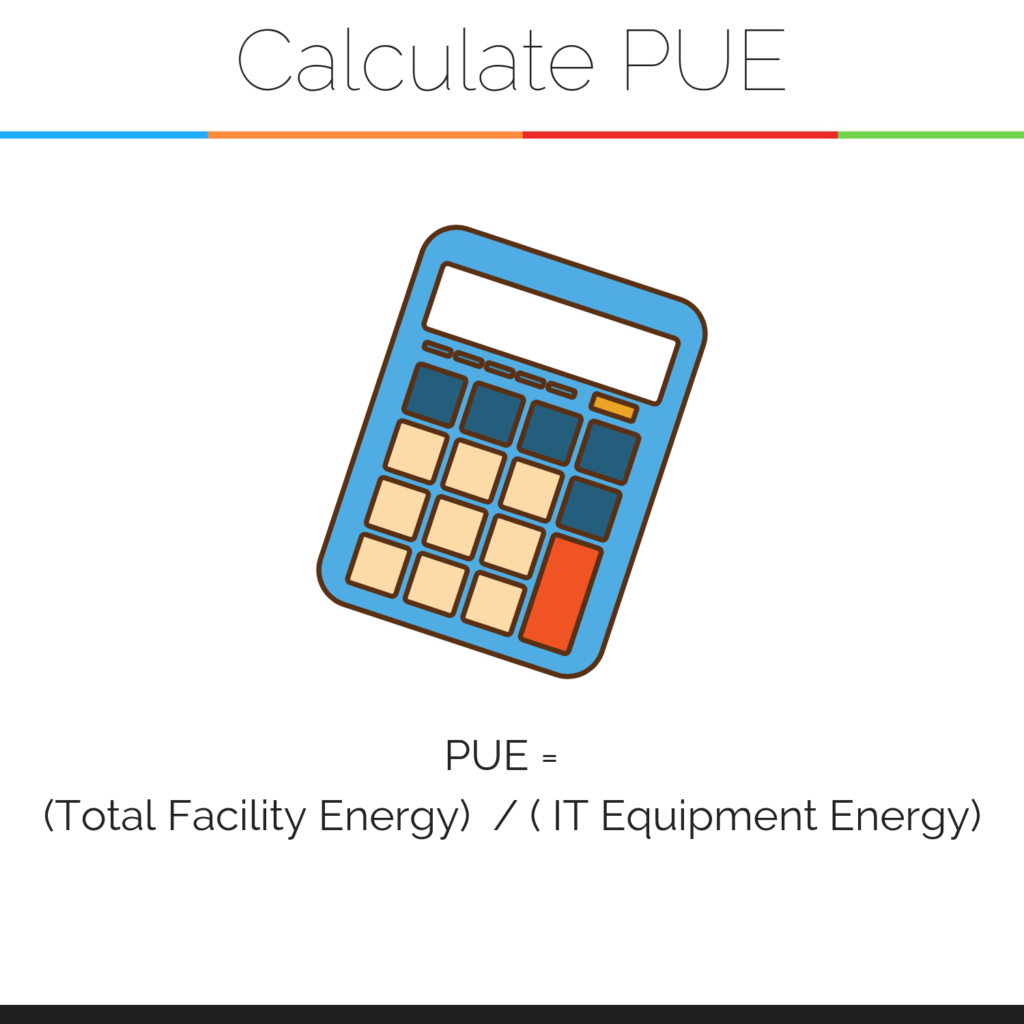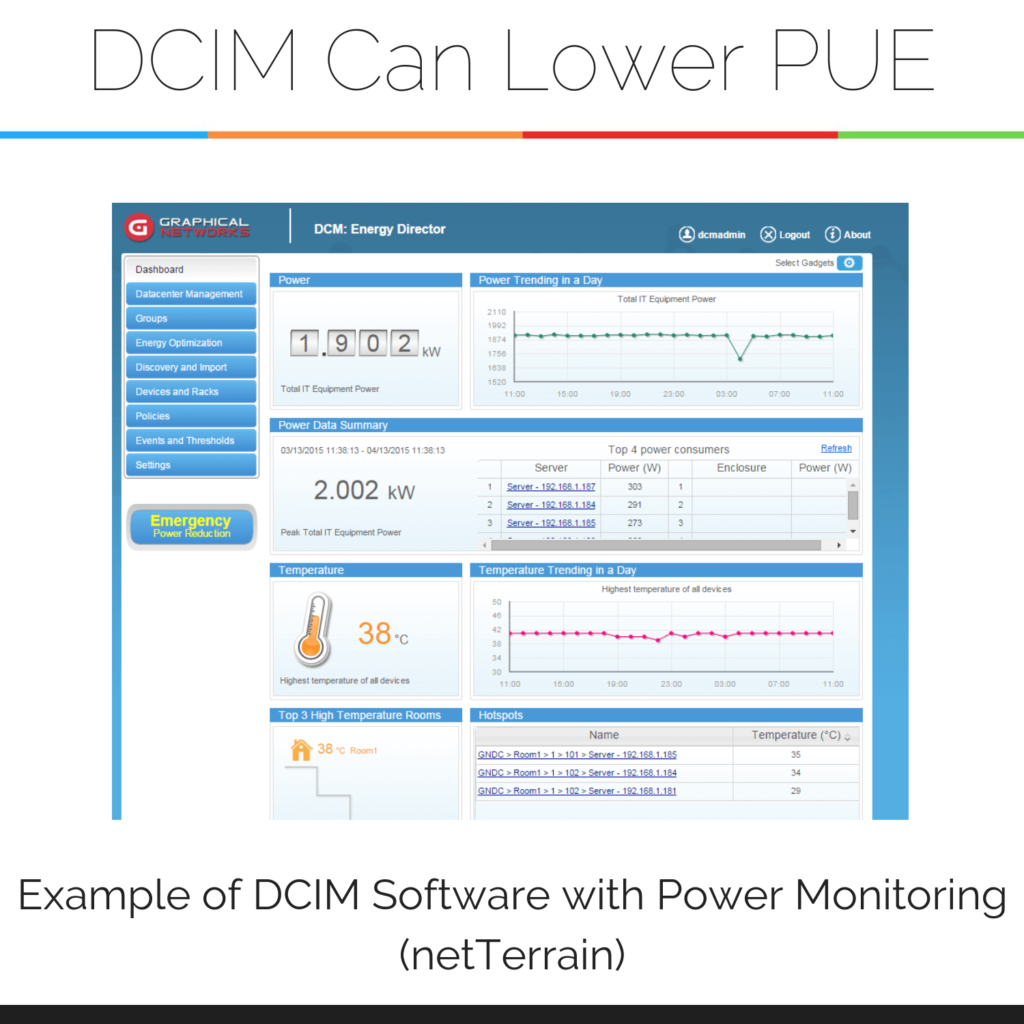 PUE, which stands for Power Usage Effectiveness, is a ratio used to measure data center energy consumption. This ratio was first released in 2007 via The Green Grid, which is a nonprofit consortium of data center end-users, tech professionals, utility providers, and policy makers dedicated to ‘greening’ modern data centers.
PUE, which stands for Power Usage Effectiveness, is a ratio used to measure data center energy consumption. This ratio was first released in 2007 via The Green Grid, which is a nonprofit consortium of data center end-users, tech professionals, utility providers, and policy makers dedicated to ‘greening’ modern data centers.
Data Center PUE: What’s the Goal?
The goal behind Green Grid’s development of the PUE calculation is to encourage data centers to lower their energy consumption by first understanding just how much is being used — and then by taking active steps to lower the PUE value. The optimal PUE number to achieve is 1.0 (anything lower would be an impossibility); a 2011 study conducted by the Uptime Institute indicates the average data center PUE is 1.8.
Data Center PUE: How to Calculate It
The ratio used for calculating a data center’s PUE is as follows:
PUE = (Total Facility Energy) / ( IT Equipment Energy)
To calculate your PUE, you must differentiate between what power is being used by a facility’s IT load, and what power is being used by the facility’s physical infrastructure. Some things will be easy to discern: servers are part of the IT load; cooling units are physical infrastructure — it can get tricky when differentiating systems such as where personnel work, network operations systems, and switchgear.
To find the ‘total facility energy’, you could use a utility meter (not a perfect system as you would need to wait for the monthly utility bill). Once you understand how much your total facility energy consumption is, you now need to differentiate that from how much power the actual IT equipment in your infrastructure is drawing vs. how much the facility at large is using.
To identify what will count as ‘IT Equipment Energy’ you might create a detailed list of types of power-drawing equipment in your data center, and assign each type with one of the following categories: “IT load”, “physical infrastructure” or “exempt”.
Once you’ve identified what is included as ‘IT Load’, you need to total the power readings at your power distribution units (PDU’s) or from remote power panels, or smart rack PDU’s.
Data Center PUE: Theory vs. Practice
Although on paper every power-consuming asset in a data center can be measured — in practice, it may be impossible to measure the actual energy consumption of certain devices. In these cases, estimating and/or indirect measurements may be acceptable workarounds that are doable and cost-effective.
A static PUE that’s not based on real-time, actual values is far more theory than something you can use and act upon. To truly measure data center PUE, and then to take steps to lower it, DCIM software can be used. DCIM when combined with power monitoring can measure energy consumption of the IT load using sensors — and can give users insights as to where rackspace is free as well as which servers and devices are ‘zombies’ (aka drawing power but not performing any functions).
Bottomline? Although setting a PUE goal may seem like more of a headache than its worth, the pressure to green data centers is growing alongside the need for data centers today. In fact, as of 2018, all U.S. federal data centers (of all sizes) are now required to use DCIM to achieve a PUE of 1.5 or lower. If you need to discover what your PUE is and how you can lower it, you may want to invest in DCIM software.

